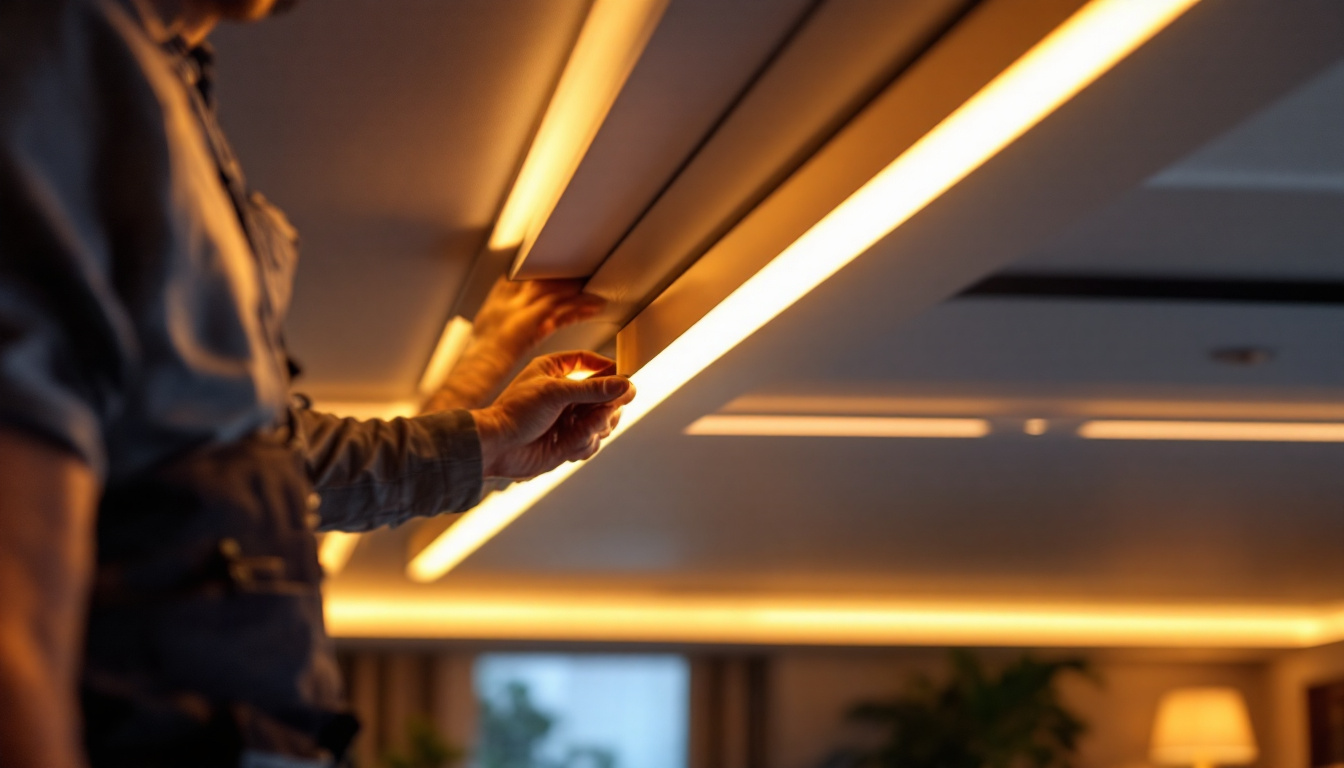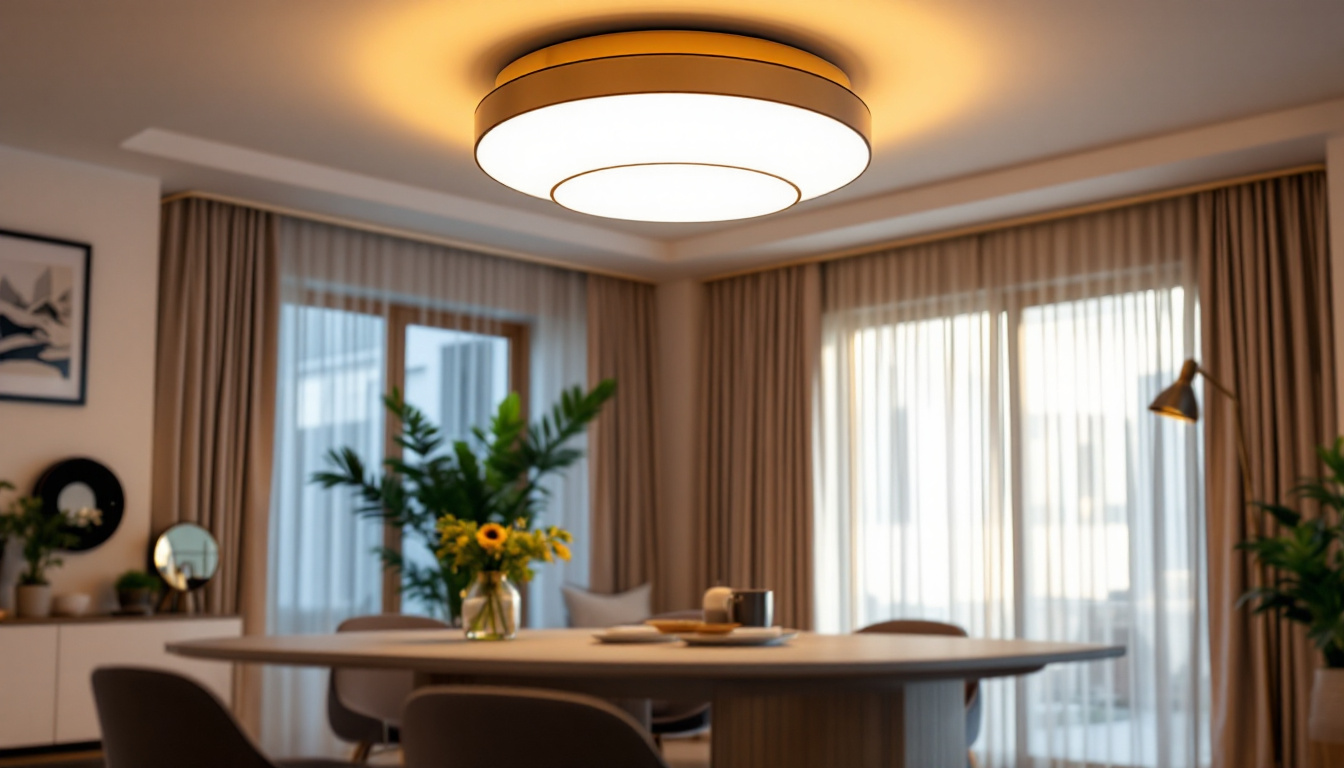

In the evolving world of interior design and construction, lighting plays a pivotal role in creating ambiance and functionality. Among the various lighting solutions available, LED ceiling light strips have emerged as a popular choice for both residential and commercial spaces. For lighting contractors, mastering the installation and application of these strips can significantly enhance service offerings and client satisfaction. This article delves into the intricacies of LED ceiling light strips, providing valuable insights and practical tips for lighting professionals.
LED ceiling light strips are flexible circuit boards populated with light-emitting diodes (LEDs). They can be used in various applications, from accent lighting to general illumination. Their versatility and energy efficiency make them an attractive option for modern spaces. However, understanding the technical aspects of these strips is crucial for successful installation and application.
There are several types of LED ceiling light strips available on the market, each designed for specific applications. The most common types include:
Understanding these types will enable lighting contractors to recommend the most suitable option based on client needs and project requirements. For instance, RGB strips can be particularly beneficial in entertainment spaces, such as home theaters or gaming rooms, where customizable lighting can enhance the overall experience. Meanwhile, single color strips are often preferred in professional settings, such as offices, where a uniform light can help improve focus and productivity.
When selecting LED ceiling light strips, several key features should be taken into account:
Additionally, it is important to consider the strip’s adhesive backing, which can greatly affect installation ease and longevity. Some strips come with a strong adhesive that allows for quick application on various surfaces, while others may require additional mounting hardware for secure placement. Furthermore, the flexibility of the strip is another vital feature, especially in applications where the lighting needs to contour to unique shapes or angles. This adaptability can enhance the overall design aesthetic of a space, allowing for creative lighting solutions that can transform a room’s ambiance.
Proper installation is crucial for maximizing the effectiveness of LED ceiling light strips. Lighting contractors must be familiar with various techniques to ensure a seamless and professional finish.
Before installation begins, thorough planning is essential. This includes measuring the installation area, determining the strip length needed, and deciding on the power source. Proper planning can prevent common pitfalls, such as running out of materials or miscalculating power requirements.
Additionally, it’s important to consider the layout of the space. For instance, in a kitchen, under-cabinet lighting can enhance functionality, while in a living room, cove lighting can create a cozy atmosphere. Understanding the intended use of the space will guide the installation process.
Having the right tools and materials on hand is vital for a successful installation. Essential tools include:
In addition to tools, selecting high-quality LED strips and accessories is crucial. Low-quality products may lead to flickering lights or premature failures, which can damage a contractor’s reputation.
The installation process can be broken down into several key steps:
Beyond functionality, LED ceiling light strips can significantly enhance the aesthetic appeal of a space. Lighting contractors should be familiar with design principles that can elevate the overall look of a project.
Layered lighting involves using multiple light sources to create depth and dimension in a space. LED ceiling light strips can be integrated with other lighting types, such as recessed lights and pendant fixtures, to achieve a well-balanced illumination scheme.
For instance, in a dining area, combining overhead pendant lights with LED strips along the perimeter can create a warm and inviting atmosphere. This approach not only enhances the visual appeal but also improves functionality by providing adequate lighting for various activities.
Color plays a significant role in how a space is perceived. LED strips, particularly RGB options, allow for dynamic color changes that can influence mood and ambiance. Lighting contractors should be adept at recommending color schemes that align with the client’s vision.
For example, cooler tones can create a calming effect in a bedroom, while vibrant colors may be suitable for entertainment areas. Understanding the psychological effects of color can help contractors guide clients in making informed decisions.
As energy efficiency becomes increasingly important, LED ceiling light strips stand out as a sustainable lighting solution. Lighting contractors should be knowledgeable about the benefits of LED technology and how it contributes to energy savings.
LED lights consume significantly less energy compared to traditional incandescent or fluorescent bulbs. This not only reduces electricity bills but also minimizes the environmental impact. For contractors, educating clients about energy consumption can enhance their value proposition.
Calculating the potential energy savings for clients can be a persuasive selling point. For instance, if a client is considering replacing traditional lighting with LED strips, providing a comparison of energy costs can demonstrate the long-term benefits of the investment.
In addition to energy efficiency, promoting sustainable practices in lighting design is essential. This includes recommending LED products that are free from harmful substances, such as mercury, and encouraging clients to recycle old lighting fixtures.
Contractors can also advocate for smart lighting solutions that allow for automation and remote control, further enhancing energy savings. By positioning themselves as environmentally conscious professionals, contractors can attract clients who prioritize sustainability.
While installing LED ceiling light strips can be straightforward, several challenges may arise. Being prepared to address these issues can enhance a contractor’s reputation and client satisfaction.
Flickering lights can be a common issue with LED installations. This problem is often caused by incompatible dimmer switches or insufficient power supply. Contractors should ensure that all components are compatible and recommend high-quality dimmers designed for LED use.
If flickering persists, checking the power supply and connections is essential. Ensuring that the voltage matches the LED strip’s requirements can often resolve this issue.
In some cases, LED strips may not adhere properly to surfaces. This can be due to dust, moisture, or incompatible materials. Contractors should emphasize the importance of surface preparation and may consider using additional mounting hardware, such as clips or brackets, for added security.
In challenging environments, such as bathrooms or kitchens, using silicone adhesive can provide a more robust solution for securing the strips.
The lighting industry is continuously evolving, with new technologies and trends emerging regularly. Staying informed about these developments can help lighting contractors remain competitive and innovative in their offerings.
Smart lighting is gaining traction, allowing users to control their lighting through smartphones or voice-activated devices. Integrating LED ceiling light strips with smart home systems can enhance convenience and customization for clients.
Contractors should familiarize themselves with various smart lighting systems and how they can be integrated with LED strips. This knowledge can position them as forward-thinking professionals, capable of providing cutting-edge solutions.
As LED technology continues to advance, improvements in efficiency, color rendering, and lifespan are expected. Contractors should keep abreast of these advancements to recommend the best products to clients.
Additionally, exploring options for tunable white LEDs and OLED technology can offer clients even more flexibility and options in their lighting design.
Mastering LED ceiling light strips is an essential skill for lighting contractors looking to enhance their service offerings and client satisfaction. By understanding the types, installation techniques, aesthetic applications, and energy efficiency benefits of LED strips, contractors can position themselves as experts in the field.
As the industry continues to evolve, staying informed about trends and advancements will ensure that contractors remain competitive. With the right knowledge and skills, lighting professionals can transform spaces and create stunning environments that meet the diverse needs of their clients.
Ready to elevate your lighting projects with the highest quality LED ceiling light strips? Look no further than LumenWholesale, where we provide contractors with spec-grade lighting products at unbeatable wholesale prices. Say goodbye to local distributor markups and hello to superior lighting products that meet the highest industry standards. With LumenWholesale, bulk buying is a breeze, thanks to our hassle-free process and free shipping. Don’t compromise on quality or value—choose LumenWholesale for the perfect blend of quality, affordability, and convenience. Visit us now for Wholesale Lighting at the Best Value and transform your lighting installations into masterpieces.

Discover why purchasing vapor tight lighting in bulk from local distributors might not be the best choice.

Discover effective cost-saving strategies for lighting contractors using commercial LED strip lights.

Discover how unique flush mount lighting is revolutionizing the lighting industry, offering contractors innovative solutions for modern design challenges.

Discover the competitive edge Nauticus Lighting offers to contractors.
Get notified when NEW deals are released.
Optimize your budget with wholesale discounts.
Only top-quality, specification-grade lighting products.
No additional costs at checkout - what you see is what you pay.
We understand the unique needs of contractors.